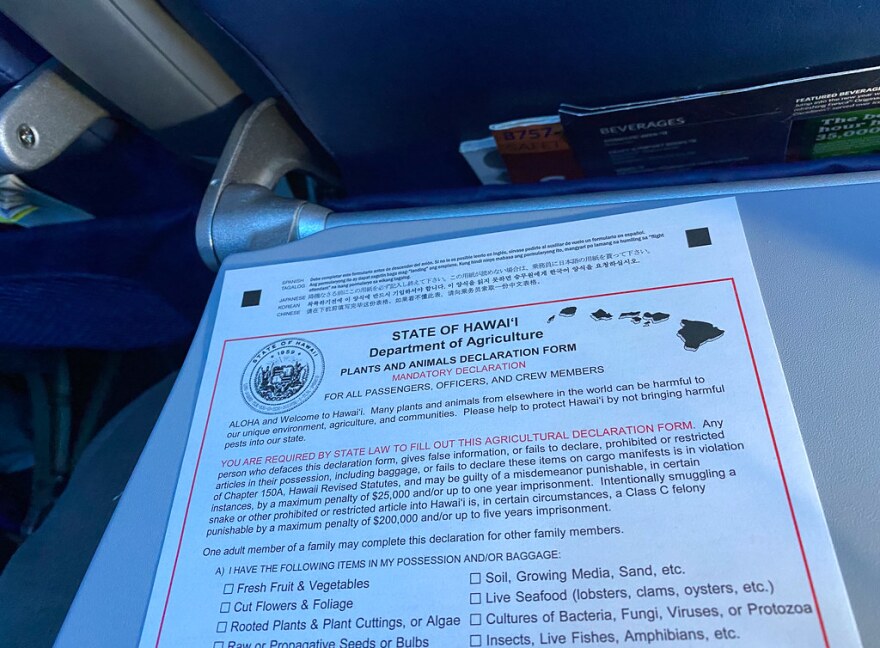When Helmuth Rogg flew to Kona from Oregon this week, he noticed many of his fellow passengers neglected to fill out the Hawaiʻi Department of Agriculture declaration form.
“This person talked to their neighbor, said, 'Oh, I don't fill this out, I live on the Big Island, I don't care about this, nobody checks,'” said Rogg.
Rogg, for the record, said he would "love" for visitors and residents to fill out the agriculture form. Which makes sense — since he's the administrator for the Plant Industry Division of Hawaiʻi's Department of Agriculture.
“Our mission is to protect Hawaiʻi from invasive species and protect our natural resources and agriculture economy,” said Rogg. He believes the agriculture forms are an important part of that mission. But he knows that compliance is an issue.
One solution that might streamline the process? Going digital.
State Sen. Glenn Wakai of Oʻahu said he’s been trying to digitize the agriculture forms for years. The state's pandemic Safe Travels program showed that mandatory digital surveys for visitors and returning residents were possible.
Now, Wakai has the momentum he needs to launch a pilot program that he hopes will make paper declaration forms a thing of the past.
“This day has been long in coming,” said Wakai. “We've been putting out those ag forms on paper since 1950. So we're talking about 70 years of paper forms.”
Wakai said the pilot program with Hawaiian and Alaska airlines could roll out digital agriculture forms as early as this summer.
Going digital could save money as well as trees. Wakai said the state currently shells out $800,000 for a two-year contract to print and process the paper forms. Many of which don’t even get filled out.
Jonathan Ho is the inspection and compliance section chief for the state’s Plant Quarantine Branch. He's the one who tracks people down if they say they’ve brought items, such as a snake, in their luggage.
Ho said that ensuring 100% of people fill out their ag forms is “impossible.”
“Generally speaking, about 50-75% is what you normally will see,” said Ho.
While he anticipates there will be some kinks that need to be worked out, Ho does think that digital versions of the agriculture form will help his team work more efficiently — and give them more of a heads up about where they need to devote resources.
“Right now, you can only get [the ag forms] as quickly as the plane lands,” said Ho.
If folks filled out the form earlier when they were checking in for their flight, then Ho’s team would know ahead of time if there was anything fishy, furry or reptilian in their luggage.
“Instead of trying to survey every flight, you could prioritize,” said Ho. “You're gonna use the staff to target those particular things because you have advanced notice.”
But Ho doesn’t think digital forms will be a silver bullet. Folks still have to fill them out, and fill them out honestly.
“There's this kind of expectation or hope that those who encounter the regulation will do the right thing," Ho said.






